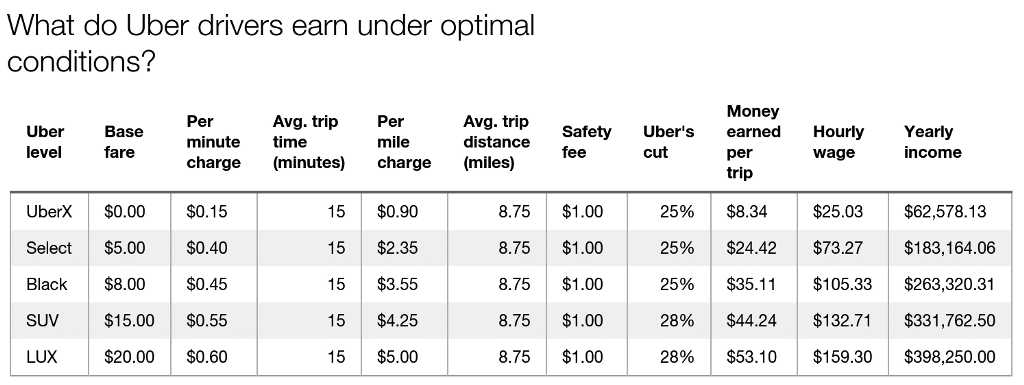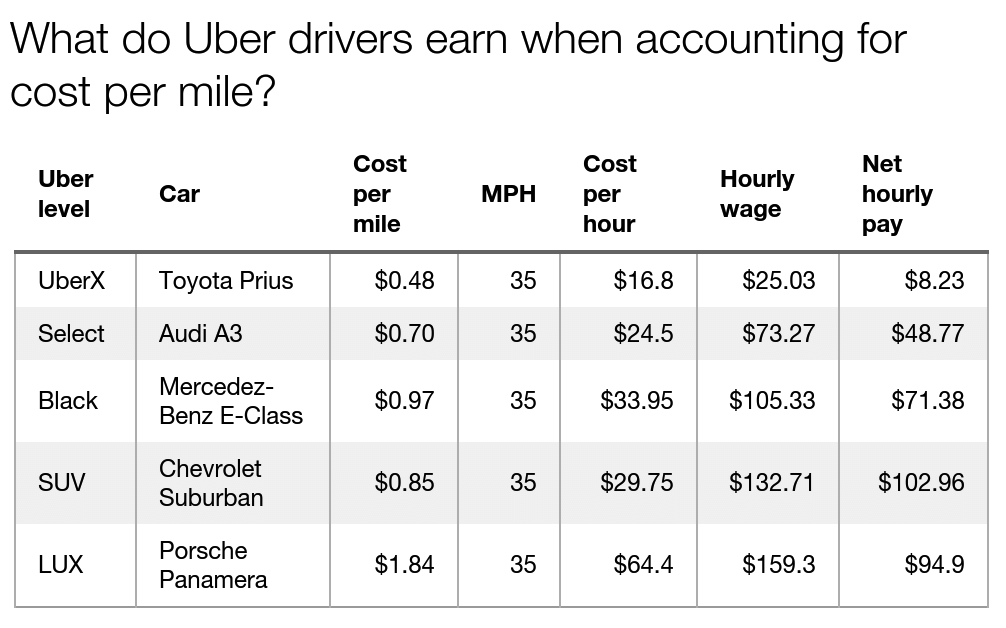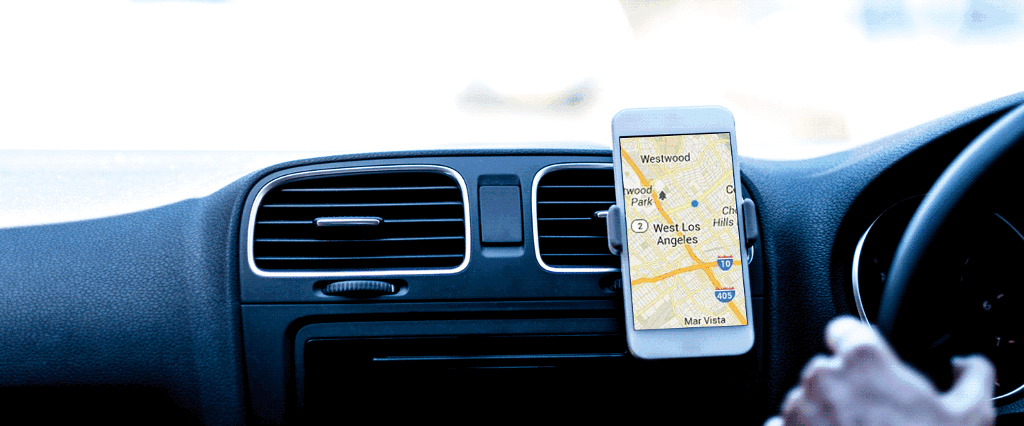They make it sound so simple: Sign up to drive with Uber and soon you’ll be earning an excellent supplementary income!
That’s the central message in Uber’s ongoing multi-platform marketing campaign to recruit new drivers. And judging by the crowd at its on-boarding office near UCLA’s campus last week, it’s working: A steady stream of men was greeted by an iPad where they checked in with their phone numbers. Then, they waited for a seat to open up at one of the dozen or so folding tables, where Uber employees guided prospective “driver partners” through the sign-up process.
Like these men, I found myself here because I was interested in finding out how much money, exactly, an Uber driver gets paid. My inquiry wasn’t entirely journalistic: Due to a recent bike theft and my increasing fatigue from using Uber and Lyft as my primary modes of transportation for the past year, I’m finally considering car ownership.
One of the reasons I’ve resisted for so long is I hate the idea of spending money on something that will continuously lose value the moment I drove it off the lot. Would driving Uber a few hours a week counteract the depreciation of my car’s value?
Unfortunately, it’s nearly impossible to find out. When I asked the receptionist at the on-boarding office what Uber might pay me, he told me he didn’t have that information. This followed after two excruciating, circuitous phone calls with Uber personnel, neither of which revealed the average wage for Uber drivers in Los Angeles, and several nagging emails to Uber’s press line. Rather than answers, Uber employees pointed me to the different per mile and per minute rates for Uber’s various levels of service (e.g., UberX vs. UberBLACK), information that was readily available on the sign-up website. And they urged me to visit Uber’s in-person assistance office for aspiring drivers, which is how I found myself here in the first place.
One could argue the wages Uber pays its drivers is proprietary, competitive information, and Uber is therefore smart and well within its right to conceal that data. But it’s disingenuous for a company to extoll the money-making virtues of Uber without disclosing what the job actually pays.
So I decided to estimate the wage myself.
The main reason Uber’s driver relations workers hesitated to provide me wage information is there are several factors that determine the price of a ride (and thus, how much the driver earns). Every ride includes a flat $1 “safety fee.” Then there’s a flat base fare, plus a per minute charge and a per mile charge, all of which vary based on level of service (UberX vs. UberBLACK vs. UberSUV, etc.). Uber takes a 25 or 28 percent cut of that (again depending on the service tier), with the rest going to the driver.
For simplicity’s sake, let’s disregard surge pricing. This might be a tad unfair since surge pricing is such a moneymaker for drivers, but it’s unpredictable, and if Uber won’t provide any data regarding the frequency of surge pricing, then it’s hard to accurately factor it into this calculation.
When researchers at the Texas Transportation Institute at Texas A&M University gave Los Angeles and Orange counties the dubious honor as the most congested regions in the nation in 2007, it assumed cars travel at 35 mph at peak drive times. And let’s, for argument’s sake, assume the following for Uber rides in L.A.:
- The average length of the trip is 15 minutes.
- The average time between dropping off a passenger and picking up a new one is 5 minutes (generous considering Uber drivers routinely have to wait that long for riders to get out of their damn house).
That would mean LA Uber drivers can expect to have three fares per hour, with each ride 15 minutes long and 8.75 miles in distance. Given all that, we can calculate a driver’s hourly wage for each level of service using this equation:
Hourly wage = (((base fare) + (15 minutes) × (per minute charge) + (8.75 miles) × (per mile charge) + ($1 safety fee)) × (1 − (the percentage Uber retains))) × 3
So, given our parameters, your average schmo or Prius driver who takes to driving UberX can expect to make almost $25 an hour (not bad at all). If you have a nice car, though, you can make some serious coin. (I’m tempted to buy a luxury vehicle and start driving UberSelect full-time.)
To calculate yearly income, we took the hourly wage, multiplied it by 40 (the standard workweek) and then multiplied the product by 50 (assuming the driver works all but two weeks of the year).

Obviously, these numbers are insane. If Uber promised a $60,000 salary — more than double the national average for entry-level jobs, according to Glassdoor — they wouldn’t need to market to potential drivers; people would quit their shitty office jobs in droves to drive Uber.
The numbers are inflated because we’re assuming the absolute best conditions for a driver. If a driver encounters zero traffic, travels at a steady 35 mph clip, finds a nearby rider immediately after dropping off each passenger, has zero problems navigating to that next customer, doesn’t have to wait for the passenger to come out of his or her house and find the Uber car, then, yeah, I suppose you can make hundreds of thousands of dollars.
Thing is, every mile you put on your car, every minute you own it, comes at the expense of its value. The Kelley Blue Book (the authority for appraising a car’s value) calculates the total cost of owning a car in cost per mile, and was kind enough to provide MEL with the per mile cost for the 2016 models of the different cars you might find at each tier of Uber service. You can see that when you subtract the cost of driving these cars, the amount an Uber driver makes is significantly less.

For UberX, the only viable option for most wannabe Uber drivers, the net pay comes to a little more than $8 per hour, a pittance, and almost half LA’s new $15 minimum wage. And it’s unlikely the people who need to drive UberX to get by have the money to buy a new Suburban.
So the next time you take an UberX in LA and marvel at how cheap it was, keep in mind that your cheap ride was predicated on a woeful wage for the driver. (All the more reason to tip him.)
John McDermott is a staff writer at MEL. He recently wrote about the most expensive (and least satisfying) Cobb salad he ever ate.
